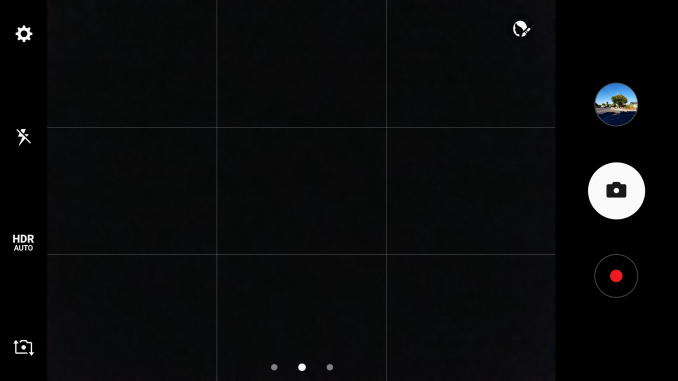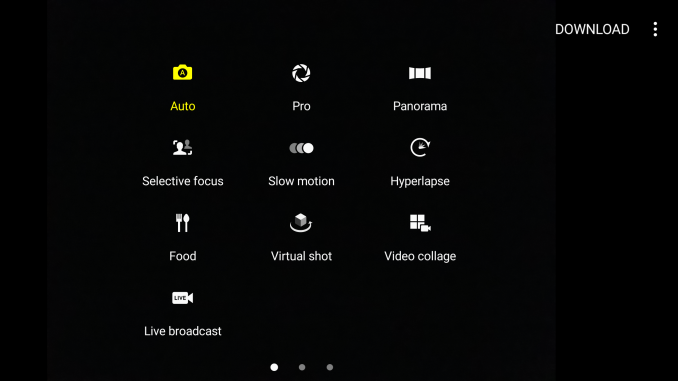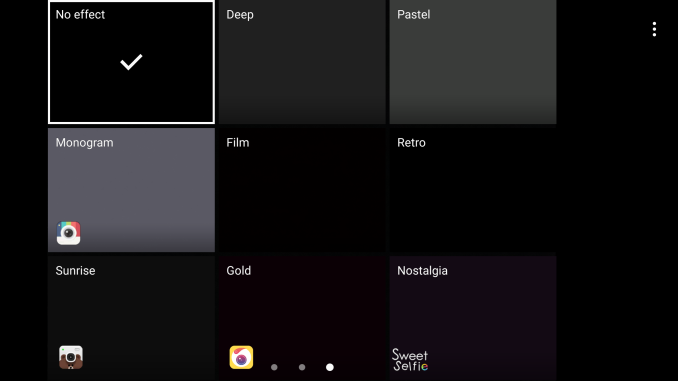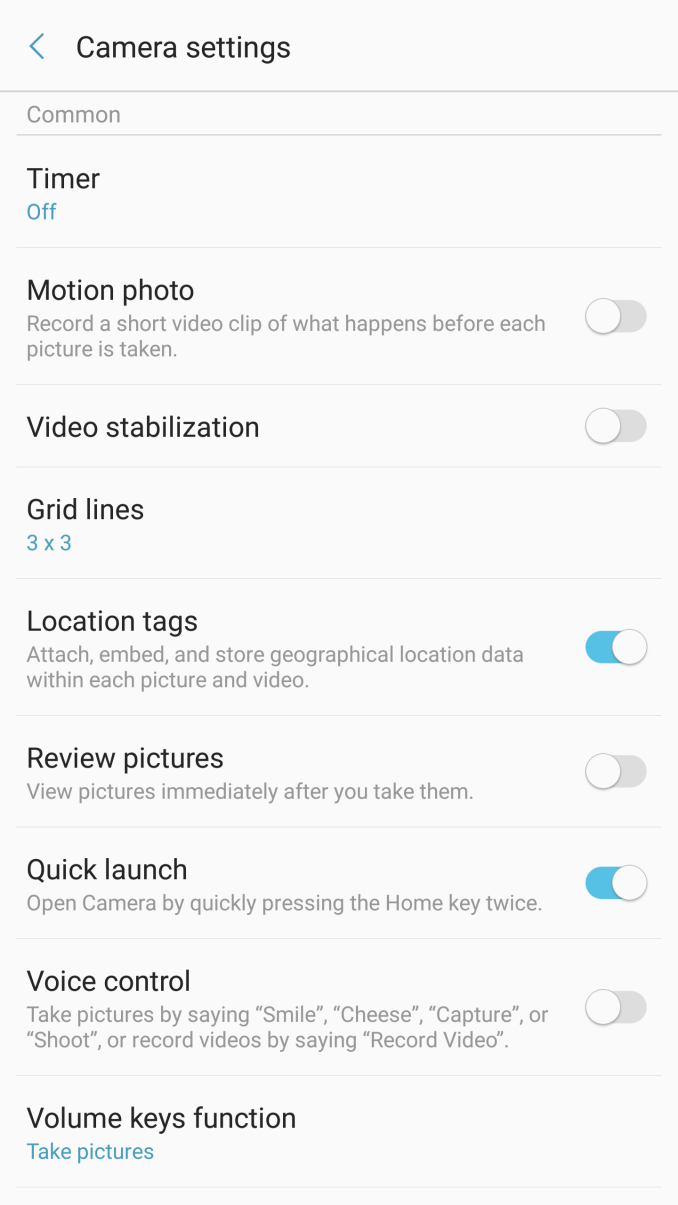The Samsung Galaxy Note7 (S820) Review
by Joshua Ho on August 16, 2016 9:00 AM ESTCamera Architecture
In general, camera has become probably the single biggest point of differentiation between smartphones at this point. As smartphones are often the only camera that most people carry on a day to day basis, the rear camera on a smartphone really cannot be a disappointment relative to the competition. While we can talk about how much a front-facing camera matters in terms of quality, it’s pretty safe to say that for photos and videos that are worth saving will be taken with the rear-facing camera.
While post-processing and a number of other factors are going to have a huge impact on the overall camera experience, the foundation that makes it possible to deliver a great camera is always going to start at the hardware.
| Samsung Galaxy Note Cameras | ||||
| Galaxy S6 Galaxy Note5 |
Galaxy S7 Galaxy Note7 |
|||
| Front Camera | 5.0MP | 5.0MP | ||
| Front Camera - Sensor | Samsung S5K4E6 (1.34 µm, 1/4") |
Samsung S5K4E6 (1.34 µm, 1/4") |
||
| Front Camera - Focal Length | 2.2mm (22mm eff) | 2.1mm (21mm eff) | ||
| Front Camera - Max Aperture | F/1.9 | F/1.7 | ||
| Rear Camera | 16MP | 12MP | ||
| Rear Camera - Sensor | Sony IMX240 Samsung S5K2P2 (1.12 µm, 1/2.6") |
Sony IMX260 Samsung S5K2L1 (1.4 µm, 1/2.6") |
||
| Rear Camera - Focal Length | 4.3mm (28mm eff) | 4.2mm (26mm eff) | ||
| Rear Camera - Max Aperture | F/1.9 | F/1.7 | ||
It’s probably not any surprise that the Galaxy Note7 has the same exact camera setup as the Galaxy S7, but in case it was ever in doubt it shouldn’t be now. Given the similar camera setup I don’t think that there’s a ton of difference to be expected between the two phones but things like software algorithms can and do change with time so it’s important to not just immediately write off the Galaxy Note7 or assume it’s immediately going to be award-winning. It’s worth reiterating here that the dual pixel system likely incurs a sensitivity penalty as in order to implement the dual pixel system each pixel must have a physical light barrier as you need a microlens and a barrier to make light from the same object converge on two separate photodiodes so the amount of light collected is inherently going to be less than no barrier and a single photodiode per pixel. I’m also curious to know whether any quantum effects appreciably change sensitivity here as if a single pixel is a 1.4 micron square then each photodiode has area similar to a 1-micron pixel. With that said we can move on to the one major change highlighted by Samsung, namely the user experience.
Camera UX
One of the major points highlighted in the launch event was that the camera application was completely redesigned. In addition to a fairly subdued icon that better fits the color palette for Android in general, the UI itself is a bit cleaner out of the box.
Right away when you open the camera app the most apparent thing is that the number of icons has been reduced. Instead of a dedicated mode button it’s now a swipe, and the same is true of the effects button. There’s also no more timer or resolution button on the screen by default, and the button to hide the various settings buttons has been eliminated entirely. It’s also worth mentioning that the button to change between cameras has been moved and a gesture to do the same thing has been added so you can simply swipe up or down to switch between cameras. Samsung also continues to shut off the camera after a few minutes automatically which is good if you’re a normal user but annoying if you’re trying to set up a shot of an ISO chart with a tripod.
Other than these changes almost nothing else really changes. There are some extra toggles like shape correction in the settings overflow and RAW output is now hidden under Picture Size for the rear camera but nothing else is really notable. I don’t really have anything else to say here that’s new, and I would refer to the Galaxy S7 Part 2 review if you are otherwise unfamiliar with Samsung’s camera application. As both perform identically as far as focus and capture speed goes subjectively we’ll temporarily forgo these results in favor of timeliness for this review.















202 Comments
View All Comments
lilmoe - Tuesday, August 16, 2016 - link
SD820 has the power more fluidly? Yes. Better than Exynos? Ummm... No.If you want smoother UI and better touch response, root and change the governor to Performance, or Ondemand.
lilmoe - Tuesday, August 16, 2016 - link
I've dug a little deeper into this after I bought my GS7e (Exynos). Looks like Exynos (and it's higher count of cores) plays better than the Snapdragon with the Conservative Governor that Samsung employs to save battery life. You can manually switch it to Ondemand, Interactive, or even better, Performance (eliminating most of the UI performance differences, and increase the responsiveness of the device drastically). But battery life would take a major hit, just like every other Android device with a 1440p screen.What needs to fixed and optimized is ANDROID. Google still insists on doing a crappy job with their OS, just like with their browser.
lilmoe - Tuesday, August 16, 2016 - link
"What needs to fixed and optimized is ANDROID. Google still insists on doing a crappy job with their OS, just like with their browser."What also needs to be fixed is the "higher resolutions screen is better" mentality. No smartphone should have more than a 1080p panel for optimal performance and efficiency.
There's absolutely no mention of the new power saving features that the new version of TouchWiz employs; like scaling down the resolution and how much more battery life you get out of that. Guess I'll have to test it myself when my GS7 gets the update. I'm soooooooooooooooooooooo scaling back the resolution to 1080p while leaving processing power intact.
InspectHerGadget - Wednesday, August 17, 2016 - link
Yes. The extra screen resolution is not worth the hit on battery life. Android and Samsung are also both to blame for poor optimisations. I had the Nokia 1520 which had great battery life, then the Note 5 which had only so so battery life, now the iPhone 6S Plus which has great battery life. On the Note 5 if I left the hotspot on it would get hot and drain the battery even when my Microsoft Pro 4 was in its case. I just felt too many rough edges on Samsung phones I had.jospoortvliet - Thursday, August 18, 2016 - link
Remember, guys, amoled isn't hit by lower efficiency on higher resolution, that is only an LCD problem. Now granted the gpu and cpu have to work a little harder but 1080P wouldn't look nice with pentile and Samsung does pentile to get a better endurance/longevity and brightness out of AMOLED. I don't think they made the wrong choice here. And yes, 1440P on an LCD is stupid.lilmoe - Tuesday, August 16, 2016 - link
Sorry, the governor they use is Interactive, not conservative...jospoortvliet - Thursday, August 18, 2016 - link
Then it shouldn't be an issue and if it is - they shold fix the governor not switch to performance. The performance governor is barely faster at big costs.lilmoe - Thursday, August 18, 2016 - link
It doesn't act like an Interactive governor would act at all, it's very slow to ramp up clock speed, and most ramps up the little cores. It's a good thing for battery life, but not as good for fluidity.jospoortvliet - Thursday, August 18, 2016 - link
IMHO the on demand governor should really not be costing battery life. It was designed to be a good balance and it generally is, at least on desktop.Then again with such an outdated kernel with patches who knows what is in there... wish the android vendors would get their stuff up streamed more timely...
grayson_carr - Tuesday, August 16, 2016 - link
It's a conscious decision happening at Samsung. They could tweak the kernel / governor configuration so that there are almost no frame drops and slowdowns, but it would come at the cost of battery life. Samsung is aiming for the minimum performance they think their users won't be annoyed with in order to maximize battery life, which Samsung assumes is more important to the average user. Google on the other hand configures their devices so that they maintain 60 fps in most scenarios, and their battery life suffers for it. I personally prefer Google's approach because I value a smoother and stutter free UI more than a little extra battery life, but I think a lot of people who buy Nexus devices are baffled as to why the battery life isn't as good as their Samsung phone even though the battery is just as large. Those people may prefer battery life over the smoothest UI possible.